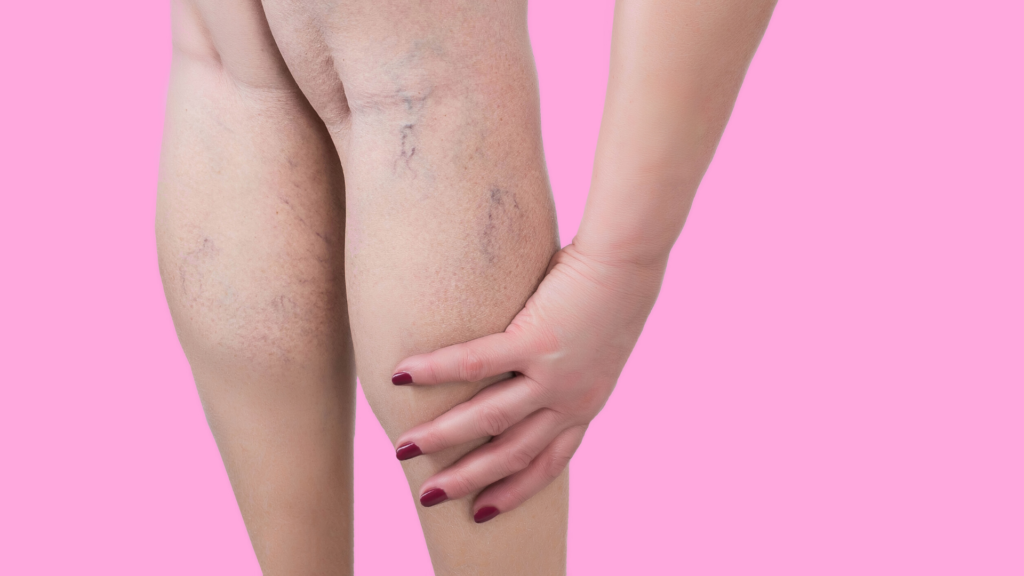
Varicose Veins in Pregnancy | Aches & Pains Series
Just when you think pregnancy has nothing else to offer, varicose veins are thrown into the mixing bowl that is life! Varicose veins can be seen through the skin as large, sometimes twisted veins that bulge or raise from the skin, usually in the lower legs or ankles. Most varicose veins are not terribly painful, but in some cases, they can be. Spider veins are smaller, red, purple, and blue vessels that can twist and turn and usually appear on the legs and face. Both varicose veins and spider veins appear most frequently during the third trimester of pregnancy.
Why Do Varicose Veins Appear During Pregnancy
While varicose veins can be hereditary, pregnancy is one of the biggest risk factors for developing them. So, let’s get this straight, it’s a package deal huh? If we take the baby we have to spin the wheel of pregnancy and take any or all of what life hands us? Wow! During pregnancy the increase in blood volume and the rise in hormones causes the veins to become larger, more dilated, and the circulation from your legs is slower due to the increased pressure of the growing uterus and baby. Standing for long periods of time, obesity, a history of blood clots, and constipation can also be contributing factors.
But wait! There’s more! Act in the next 10 minutes and . . .
When the blood vessels of your vagina relax the blood flow to your vaginal area increases, resulting in a swollen, sore, or tender vulva. In extreme cases, the vessels may bulge, they can look bluish and feel lumpy. Being on one’s feet for long periods of time, exercise, and sex can make it worse. Vaginal swelling or varicose veins of the vulva and vagina won’t affect how you deliver and should resolve by about 6 weeks postpartum. Hemorrhoids are another type of varicose vein. Hemorrhoids are varicose veins that develop on the anus or in the rectum. Search, “hemorrhoids in pregnancy” on our blog for help with this bonus discomfort of pregnancy.
Ways to Cope or Relieve the Discomfort of Varicose Veins in Pregnancy:
- Sleep on your left side. This will help relieve pressure on the inferior vena cava.
- Minimize the swelling of your veins by reducing your sodium intake
- Elevate your legs several times throughout the day
- Compression stockings may be helpful
- Get extra fiber in your diet
- Stay well hydrated
- Reduce the time you spend on your feet standing
And for those sexy vulvar varicosities!
To help you cope with or relieve the discomfort of vaginal varicose veins we have a few suggestions. Cool baths can be soothing, even if only temporarily. If you don’t enjoy cool baths try just filling the tub enough to cover your bottom or using a sitz bath on the toilet. Wearing a support garment specifically designed for vulvar varicosities may also help with the discomfort. Will it help you bring sexy back? That’s a story for another day ! Here’s another idea. When you have to sit, sit with a small pillow or something similar between your legs to apply counter pressure directly to your vulva. Last, but certainly, not least grab that bag of frozen veggies that no one is going to eat (or maybe you’ll snack on while you hang with a frozen crotch, we don’t judge) and apply it to the tender area!